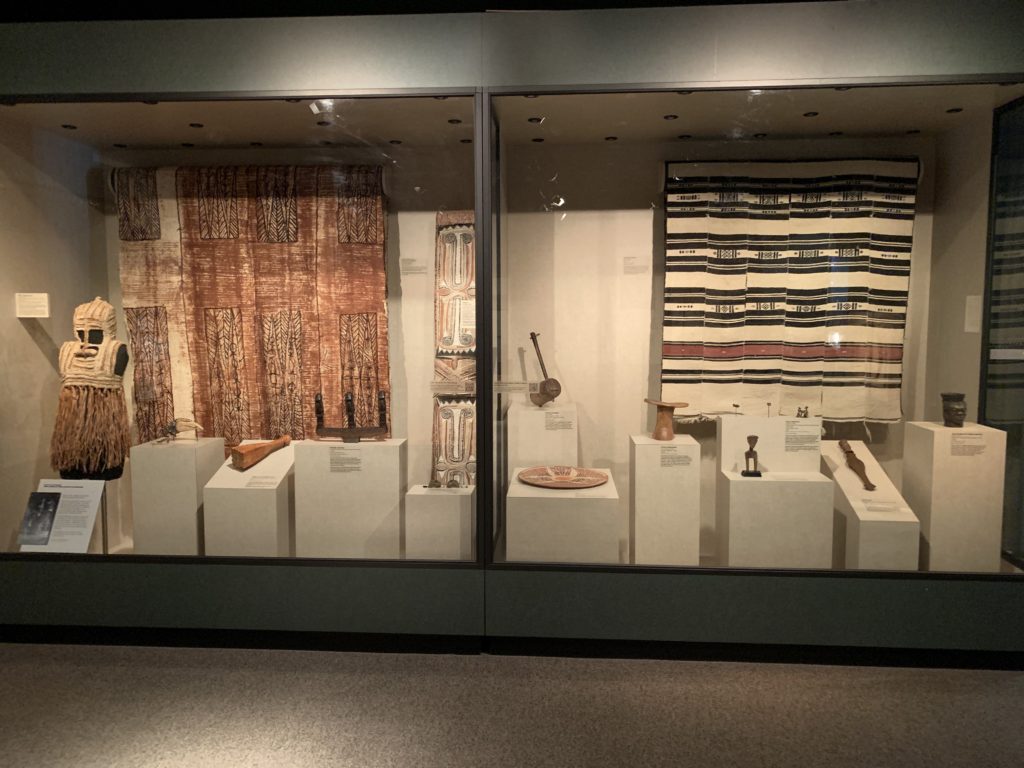Earlier this year, we posted about updates we were making to our Decorative Arts gallery. We have been continuing that work throughout the summer, and just finished rotating two more cases in that gallery. We have renewed the displays to showcase cultural materials and art from Africa and Oceania.
In the future, we hope to have a different organizing concept for this gallery, but for now, we are sticking with the geographical organization – rotating out objects that have been on view for a while and rotating in fresh material. It is no secret that most museums typically have only 2-4% of their collections on view at any given time. This is partly due to the limitations of space and so that sensitive objects can avoid being damaged by light and humidity. However, the McClung team realizes that we also have an obligation to showing more of our collections.

Swimming Goggles, before 1949, Potangeras Island, Ulithi Atoll, Federated States of Micronesia, Wood, glass, wax, string, leather, and metal, Gift of James R. Brown, 1949.1.6.

Detail of Palm Wine Cup (Mbwoongntey), c. 1950, Kuba culture, Democratic Republic of the Congo, Wood, Gift of Madge Rice, 1972.16.13.
With that in mind, we have put on display additional African objects, including new acquisitions of Asante gold weights, and new Oceanic objects. This includes one of my favorites of which are homemade Micronesian swim goggles. We are excited to report that every single object on display in these two cases is new, and that 87% of the objects are on view for the very first time!
We have also continued our Museum in Progress initiative, which includes work to “Continue to highlight and incorporate traditionally-excluded voices through our exhibitions with a renewed and on-going focus.”
Photography of all of these newly displayed objects was completed, and all of their records are now online. New vinyl QR code labels allow us to easily provide visitors with additional context for objects. For example, visitors can hear royal court musician, Albert Bisaso Ssempeke, play the endingidi (tube fiddle). Too often, museums expect for visitors to be inherently interested in unfamiliar objects, but the responsibility lies with curators and museum staff to bring those objects to life in their display.
We also have ensured that all objects going on display have ethical provenance to our best knowledge, and that any spiritual objects are approved for display by source communities. To that end, we have put up a new text panel explaining why sought out and how we received such approval to show our Asmat mask, known as a jipae, by experts and members of that community.
We hope that you are able to come and see these new installations, and we continue to encourage feedback from our visitors on changes to our galleries!
